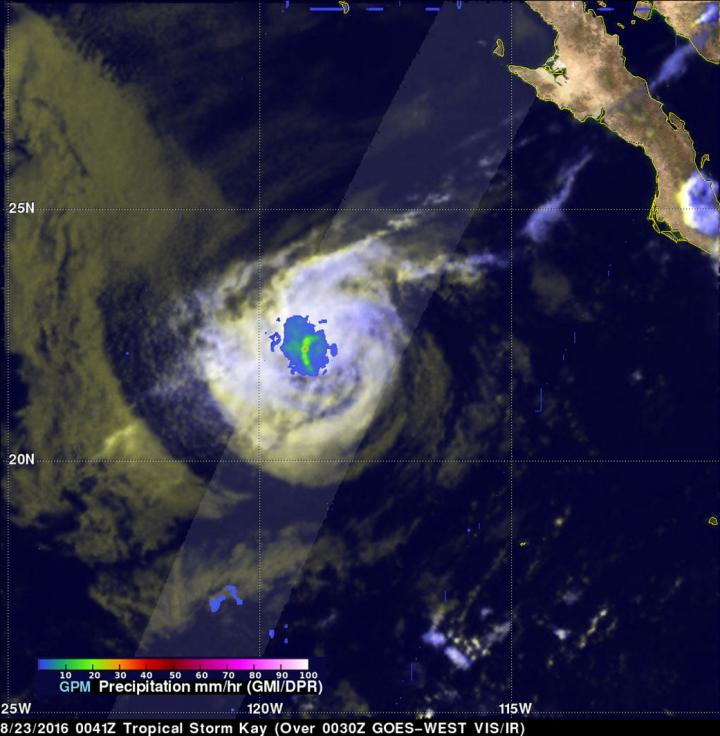
Tropical Depression Kay is quickly fading into history
The GPM core observatory satellite captured data as it passed above dissipating tropical storm Kay southwest of Baja on Aug. 22 at 8:41 p.m. EDT (Aug. 23 at 0041 UTC). Data captured by GPM’s Dual-Frequency Precipitation Radar (DPR) instrument shows that precipitation was limited to a small area of rain west of the center of the dissipating tropical storm. DPR found that rain was falling at a maximum rate of about 58 mm (2.3 inches) per hour in this small stormy area. GPM is a joint mission between NASA and the Japan Aerospace Exploration Agency. Tropical Depression Kay is quickly fading into history
By 5 p.m. EDT, the National Hurricane Center (NHC) reported that Kay had been devoid of deep convection and thunderstorms for about 12 hours. At that time, Kay’s center was about 710 miles (1,145 km) west of the southern tip of Baja California, Mexico.
Kay was then classified as a remnant low pressure system and faded into the hurricane history of the Eastern Pacific Hurricane Season.
In late August, a tropical disturbance formed 725 mi (1,165 km) east-southeast of Hurricane Javier and nearly 370 mi (595 km) south of the Baja California Peninsula. Moving slowly west, the disturbance began to develop a well-defined circulation, and was respectively upgraded into a tropical depression on August 28. Passing 10 mi (20 km) south of Clarion Island, the depression strengthened into Tropical Storm Kay. The cyclone’s forward speed increased; subsequently, Kay reached its peak intensity. After maintaining its intensity for 18 hours, Kay rapidly weakened over cold water, and was downgraded into a depression at 0000 UTC September 2. Kay dissipated the next day several hundred miles west of the Baja California Peninsula













